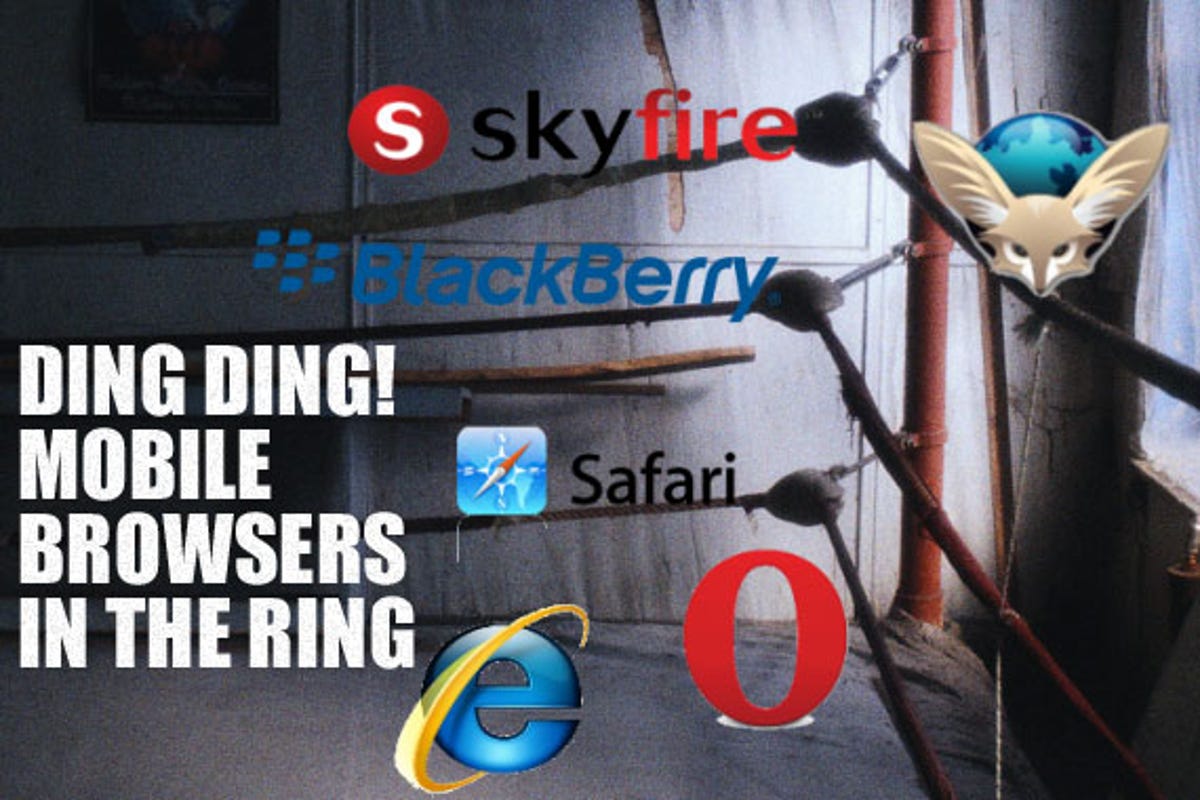
Surfing on your phone doesn’t mean riding it over wind-swept waves — it’s actually worth getting on the mobile Web. Mobile browsers are
doing a good job of bringing the Internet to life, even on the tiny screens and
anaemic processors of our phones.
But you don’t have to dance with the browser what brung you
— you can install browsers other than the default, especially if you have a
phone that runs the Symbian S60 or Windows Mobile operating systems, which are particularly
app-friendly, despite their lack of decent app stores.
We took three of the main contenders for Web-browser
domination and stacked them up against three popular built-in browsers for your
fun and edification.
We also looked at Opera Mini, which only requires a phone
that can run Java, and the built-in Symbian browser, but both were so simple
compared to the rich mobile Web of the other options that we didn’t bother
testing them — neither could finish the tests required for this comparison.
Opera looks set to release a version of its Opera Mobile
browser for Android soon — when that happens we’ll be taking Android
competitors into the ring, so stay tuned.
The challengers
Skyfire (Windows Mobile, Symbian
S60)
Opera Mobile (Windows Mobile, Symbian
S60)Fennec (Windows Mobile, Maemo)
The incumbents
Safari (iPhone)
Internet Explorer (Windows
Mobile)
BlackBerry browser (BlackBerry)
As on our desktop
browser tests, we tested standards compliance with the Acid3 test, and
JavaScript-rendering abilities with the SunSpider JavaScript benchmark.
We also tested the browsers’ speed and subjective usability.
Tests were done on a Toshiba TG01 running Windows Mobile 6.5, an iPhone 3GS,
and a BlackBerry Curve 8900. On each phone, all applications and network
connections, including the 3G connection, were turned off while we tested over
the same Wi-Fi network.
Click ‘Continue’ to enter the teeny-tiny browser fray.
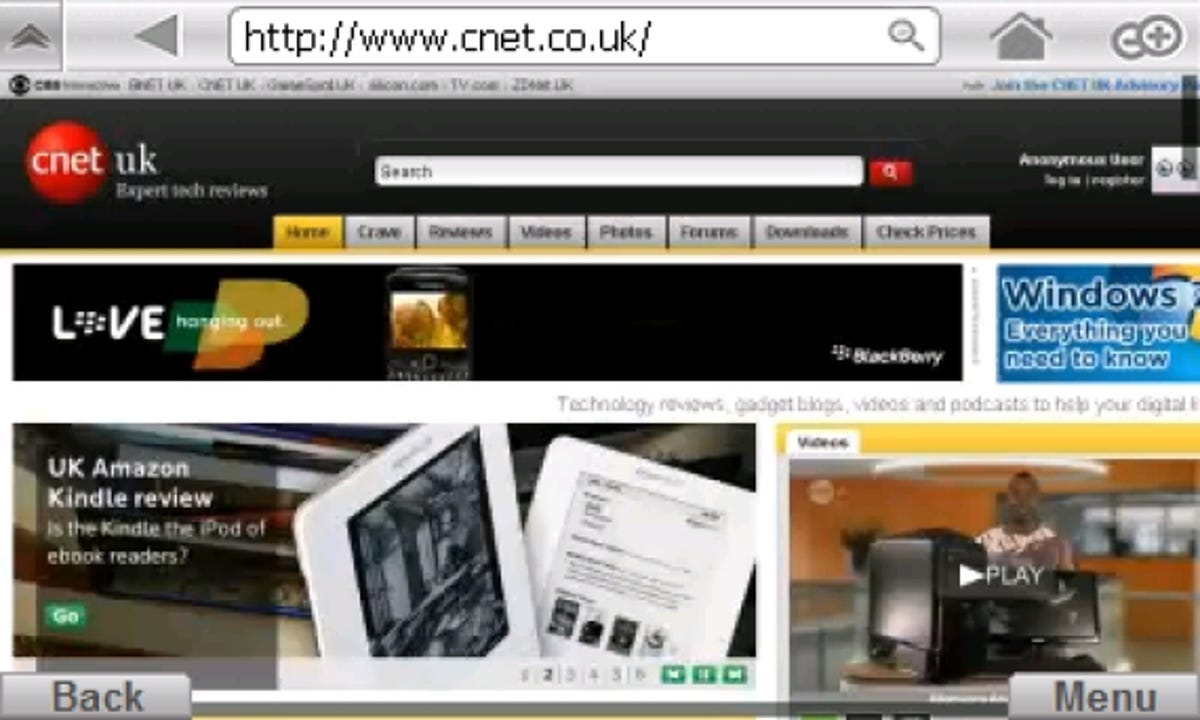

OS: Windows
Mobile and Symbian S60
Version tested: 1.1.0.13052 on WinMo
JavaScript benchmark: 14,659ms
Acid3 result: 52/100
Get it from: m.skyfire.com
Skyfire renders pages on its own servers, and then displays
them on the phone, so it can bring full versions of Web sites to your phone’s
screen insanely fast. Although it did poorly on the Acid3 test, Skyfire is one
of the few browsers that will render complicated Web sites on your phone so
they look just as they would on your PC.
In our tests, Web sites looked accurate, but heavily
compressed. Text and images both looked like over-squished JPEG images, which
made small text hard to read. We were
able to interact with Flash banners and movies — Flash reported our version of
Flash Player as 10.0.12.36 for Windows Server. Videos, however, were jerky and
very heavily squished, often out of sync with the sound, and we couldn’t open them in full
screen.
On our test phone, the Toshiba TG01, Skyfire itself wasn’t
attractive — icons were grey and compressed looking, not shiny and smooth. But
we appreciated how the user interface stayed out of the way — menu buttons
were compact, and it was easy to hide the address bar away and get it back
again.
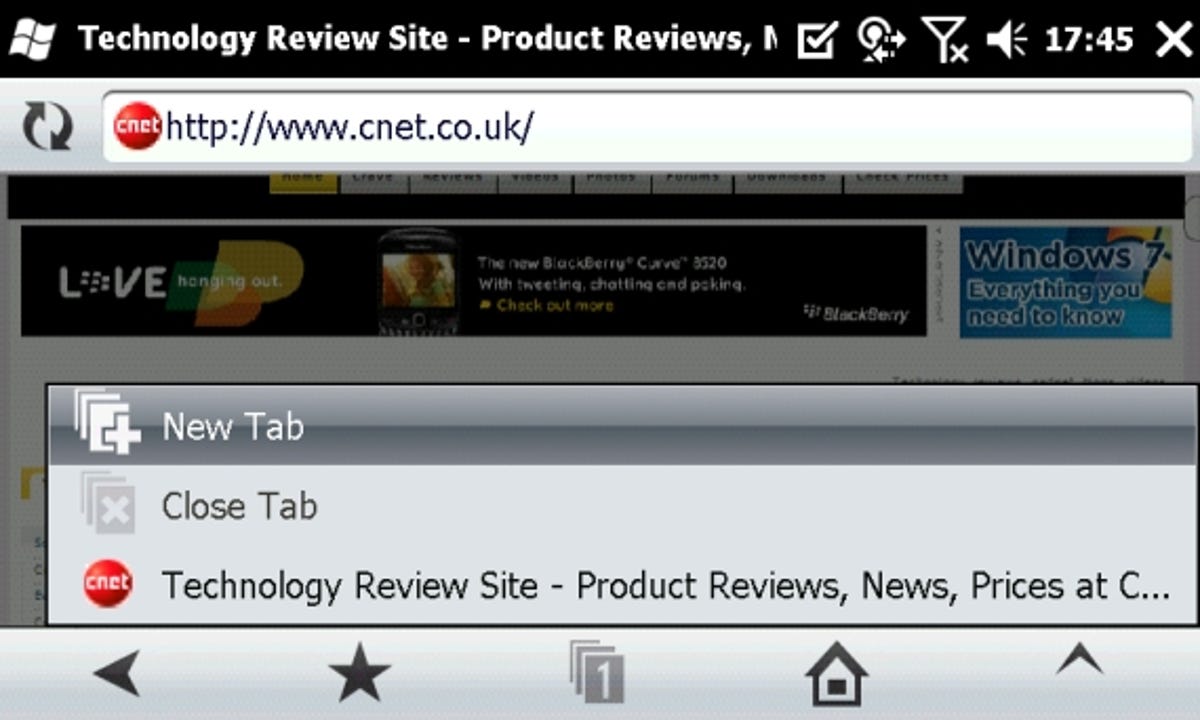

OS: Windows
Mobile and Symbian S60
Version tested: 9.7 beta
JavaScript benchmark: 40,249.2ms
Acid3 result: 100/100 (Wow!)
Get it from: opera.com/mobile/download
Opera Mobile did an excellent job of rendering complex Web
sites such as the BBC and CNET UK accurately and fast — although there
was no Flash at all, so we couldn’t look at Flash elements or videos.
The user
interface was innocuous and straightforward, and we particularly liked how Opera
Mobile handled multiple pages. In our tests, it did a good job of loading
multiple pages at once, and switching between them was simple. Opera Mobile
calls this tabs, but there were no tabs visible when we had several pages open
— instead, an icon on the menu bar along the bottom shows how many pages you
have on the go, and we could select the one we wanted from a menu.
Opera Mobile offers a Google search bar along with the
address bar when you tap to enter text there, which was a clear and helpful way
to give us the option to type an address or search.
Overall, Opera Mobile didn’t have many bells and whistles,
but it was a good, solid workhorse we’d be happy to recommend. And with a
score of 100/100 on the Acid3 test, you can be confident that pages will
display how they’re meant to in this browser.
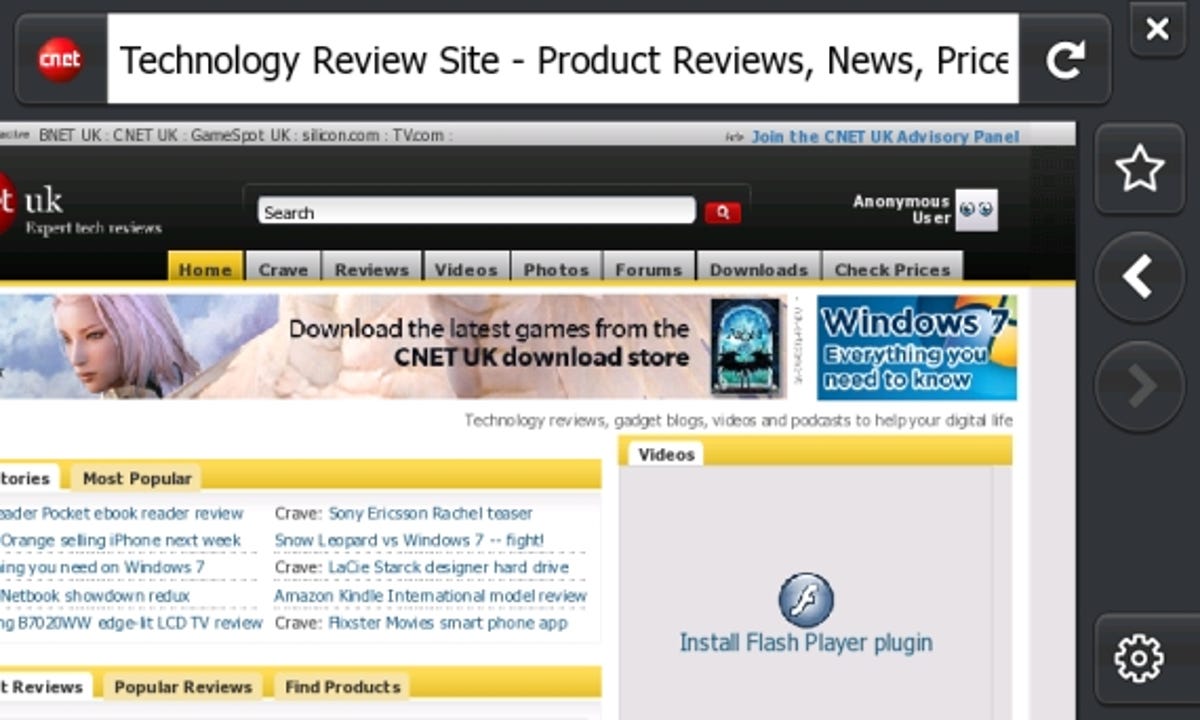

OS: Windows Mobile (alpha) or Maemo (beta)
Version tested: 1.0a3 on WinMo
JavaScript benchmark: 11,391.2ms
Acid3 result: 93/100
Get it from: bit.ly/wma3cab for WinMo
or bit.ly/FFY3m
for Maemo (direct downloads)
We don’t have a Nokia N900 Maemo
phone in the house, unfortunately, so we had to test the alpha version of Mozilla’s mobile
browser — soon to be Firefox Mobile — on Windows Mobile instead. But even in this early state, this browser
from the people who brought you Firefox shows bucket-loads of potential.
We loved Fennec’s innovative user interface, with a menu
that slides in along one side of the screen and a list of thumbnails of open
pages along the other side. This works gorgeously when we browsed in landscape
mode. Overall, Fennec’s user interface was the slickest of the contenders,
although it wasn’t the most intuitive.
Fennec was insanely fast at loading complicated pages — the
fastest of the browsers we tested. But there’s no Flash support yet, and we had
no trouble crashing this prototype version. Nevertheless, it may be worth a few
crashes to take advantage of Fennec’s slick user interface, speed and support for loading multiple simultaneous pages.


OS: iPhone
Version tested: OS version 3.1.2
Javascript benchmark: 15,499.2ms
Acid3 result: 100/100
A couple of days testing browsers actually made us
appreciate Safari on the iPhone even more, despite its drawbacks. There’s no
Flash support, and multiple pages won’t load simultaneously, but the user
interface is serene and easy to use. The iPhone’s large,
responsive touchscreen can take much of the credit for this though, especially
compared to the Toshiba TG01’s resistive effort. But Safari does an
excellent job of rendering pages accurately and quickly — better than its
desktop cousin, we’d argue.
There are heaps of alternative browsers available in Apple’s App Store, but they all use the same underlying browser technology as
Safari, with minor differences in the user interface or privacy settings
setting them apart.
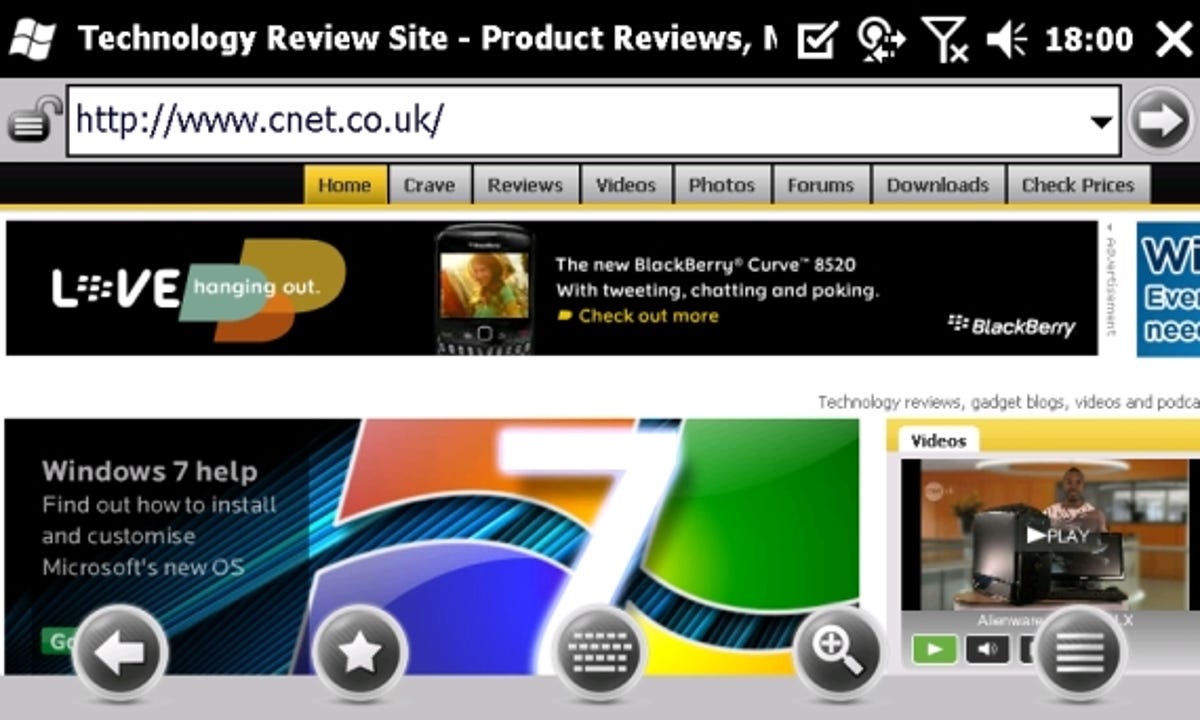

OS: Windows
Mobile
Version tested: 7
Javascript benchmark: 74,537.6ms
Acid3 result: 5/100
The latest version of Internet Explorer on Windows Mobile
6.5 is a huge improvement on what came before, but it still sticks too close to
a desktop browser. Although the menu options are bigger and more
finger-friendly, we still had to navigate through a maze of menus to get what
we wanted.
Internet Explorer was one of the slowest browsers we tested,
but it handled Flash the best of all. Flash elements showed up perfectly,
and videos were easy to play. We particularly liked how double-clicking videos
opened them in full screen. But beware, this is still limited — even on the
powerful Toshiba TG01, videos were jerky and often out of sync. Nevertheless,
it was the only browser we’d want to use for Flash sites.
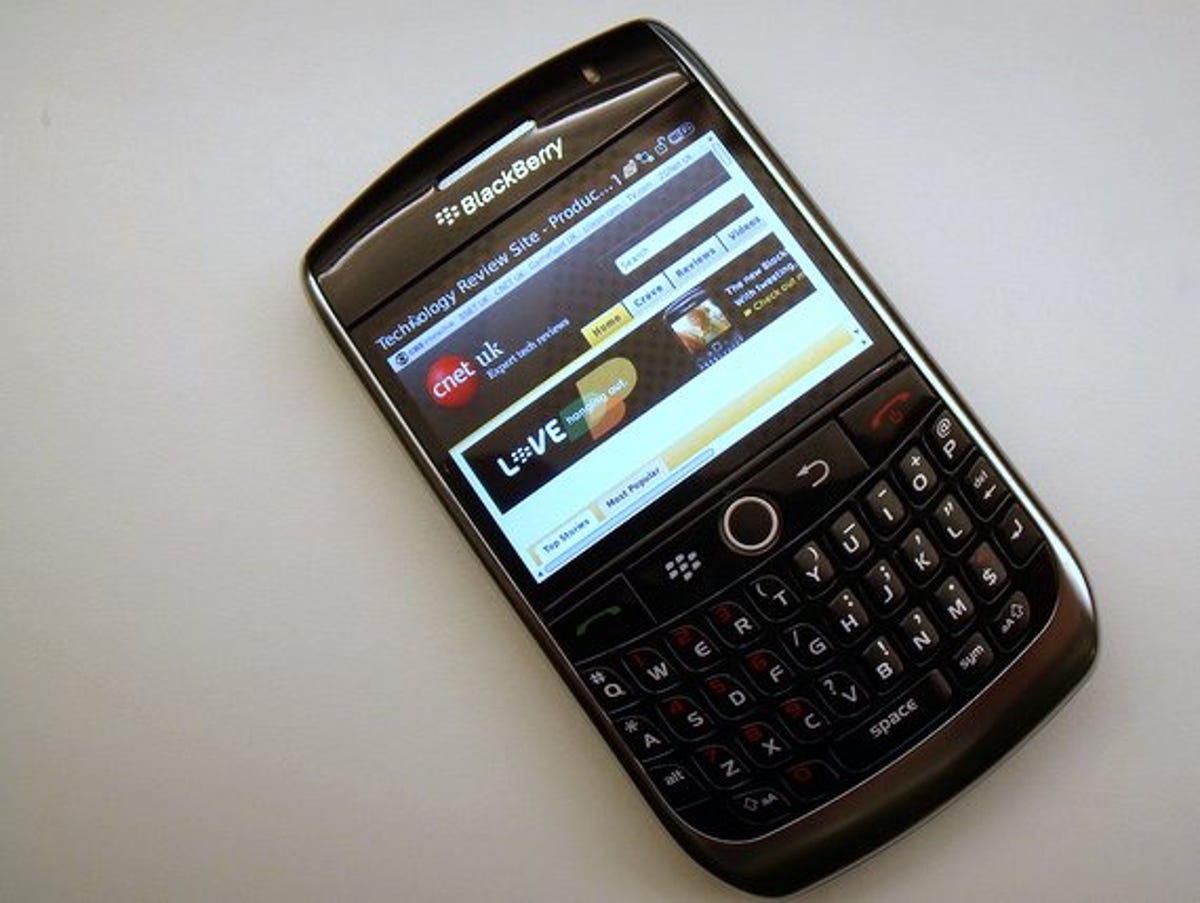

OS: BlackBerry
Version tested: OS version 4.6.1.199
Javascript benchmark: Did not finish
Acid3 result: 13/100
Despite the BlackBerry’s email strength, its browser
doesn’t come close to a full Web experience. It’s more like a mobile browser —
the kind you’d find on a feature phone, rather than a powerful smart phone. That
means mobile versions of pages, no Flash, and no loading multiple pages —
either simultaneously or not.
The BlackBerry’s little rollerball should give fine
control over pages’ tiny links, but we had to zoom in before we could
click anything. To top it off, it was by far the slowest browser we tested when
we tried loading complicated pages. The BlackBerry has many strengths, but
compared to other big-screen smart phones, browsing is not one of them.
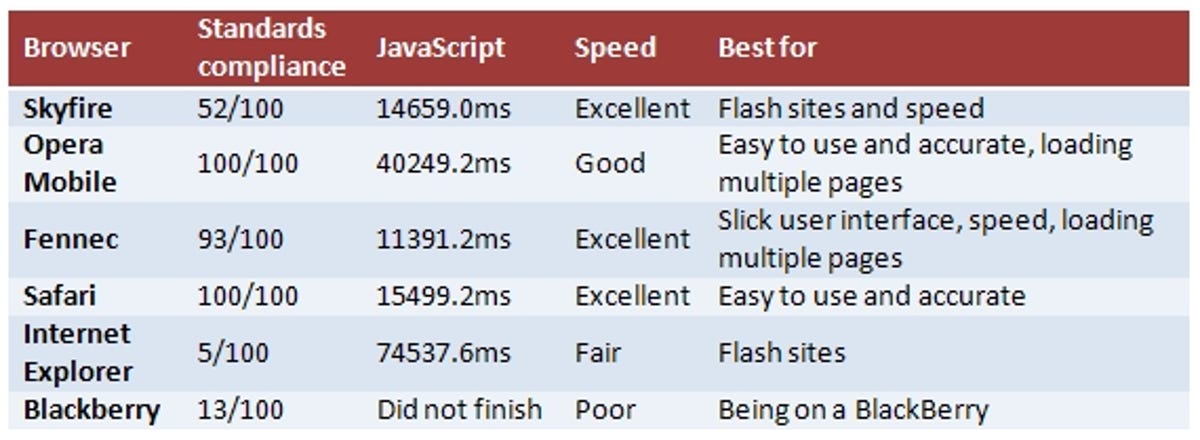

After all that, we needed a cleansing table to help us sort everything out.
We’ve distilled each browser’s strengths, but note you can’t get all of these on the same phone — if you’ve got a BlackBerry, you’re stuck with its browser, and you can’t stick the iPhone’s Safari browser on a WinMo phone. But it’s still worth knowing what the competition is like, especially if you’re looking to invest in a new Web-surfing pocket powerhouse.



